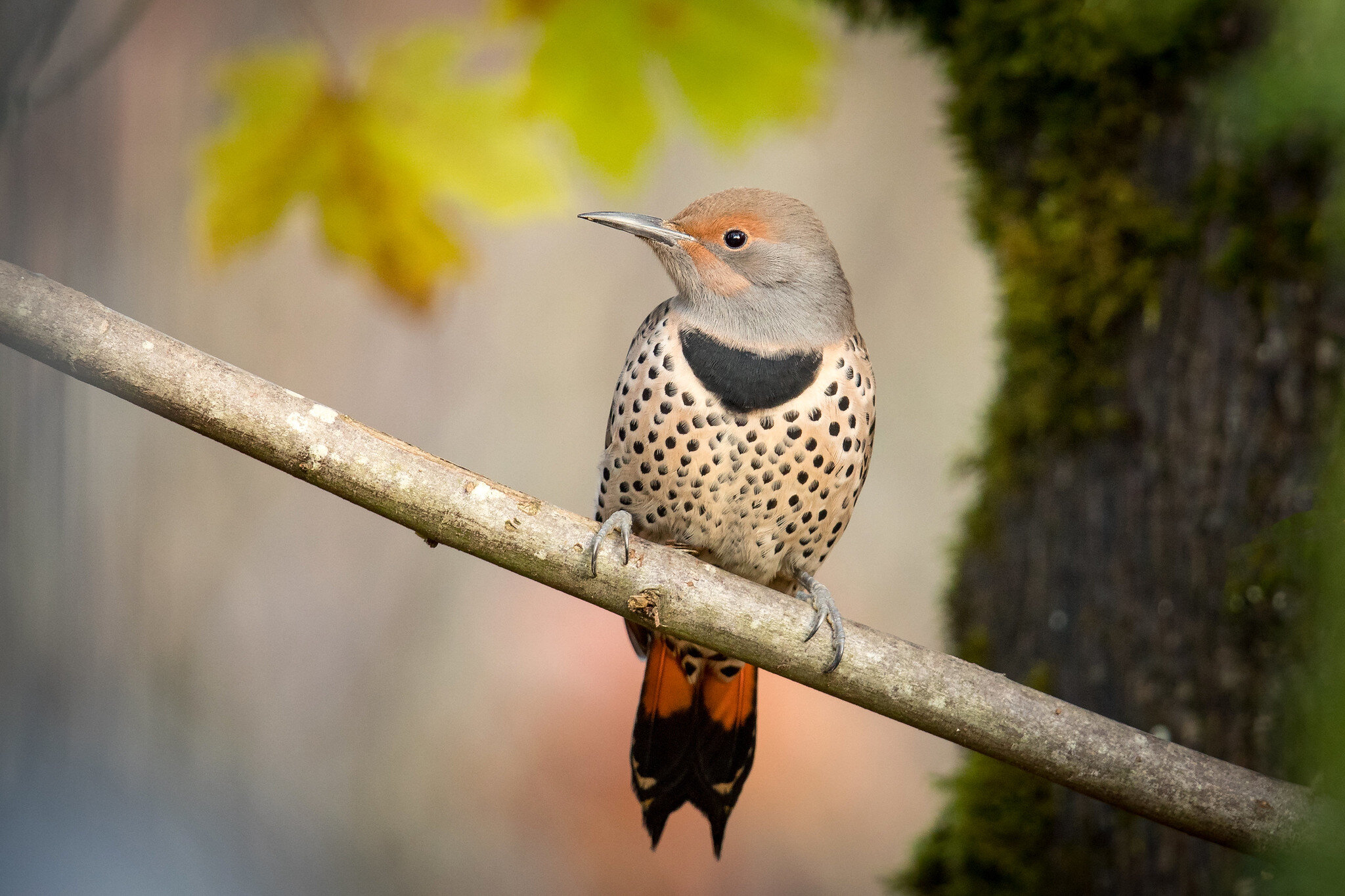The Northern Flicker is a colorful woodpecker, covering most of North America. This is a common bird, and yet if it were found in an aviary it would probably take your breath away. With a red or black mustache, a black apron, black spotting across its underside, and a yellow or red shaft on its tail, the Northern Flicker stands with its engaging plumage and curious personality.
Flickers make the unusual habit—for a woodpecker—of ground foraging. The birds will pick at ant nests and beetles or hang low on shrubs or branches to eat insects or berries, often perching horizontally. A favorite spot to find flickers at Faville Grove is in a burned prairie in spring. In the Ledge Uplands South, just south of Prairie Lane, a quick drive by after a prescribed burn might reveal as many as 15-20 Northern Flickers. I’m not sure if there’s a pulse of insect activity after a burn, but the flickers love working through a burned prairie.
Photo by Andy Reago & Chrissy McClarren
In Northern Flickers, coloration of the feathers through melanin produces a number of traits that enhance sexual selection. Studies have found that the black bib on females corresponds to the clutch size, and some flicker populations seem to go through assortative mating, where highly “decorated” males pair off with decorated females. These traits do correspond to age, but they were shown to affect reproductive output regardless of age, and the length and vibrancy of these melanin spots were related to the overall health of the bird.
Photo by Kelly Colgan Azar
Northern Flickers may also be considered a keystone species. Research in British Columbia found prolific cavity production by Northern Flickers, especially in quaking aspen trees. These created cavities were then occupied by up to 22 different species of birds and mammals—a flicker nest can shape the overall health of the woodlands and savannas where it lives. When inhabiting these cavities, it was found that south facing cavities produced more fledglings, with warmer temperatures throughout the breeding season, which lessened the demand for incubation.
You can find Northern Flickers throughout Faville Grove Sanctuary, on the edges of woodlands and savannas, and especially in freshly burned prairies come spring.
Written by Drew Harry, Faville Grove Sanctuary land steward
Northern Flicker cover photo by Mick Thompson





